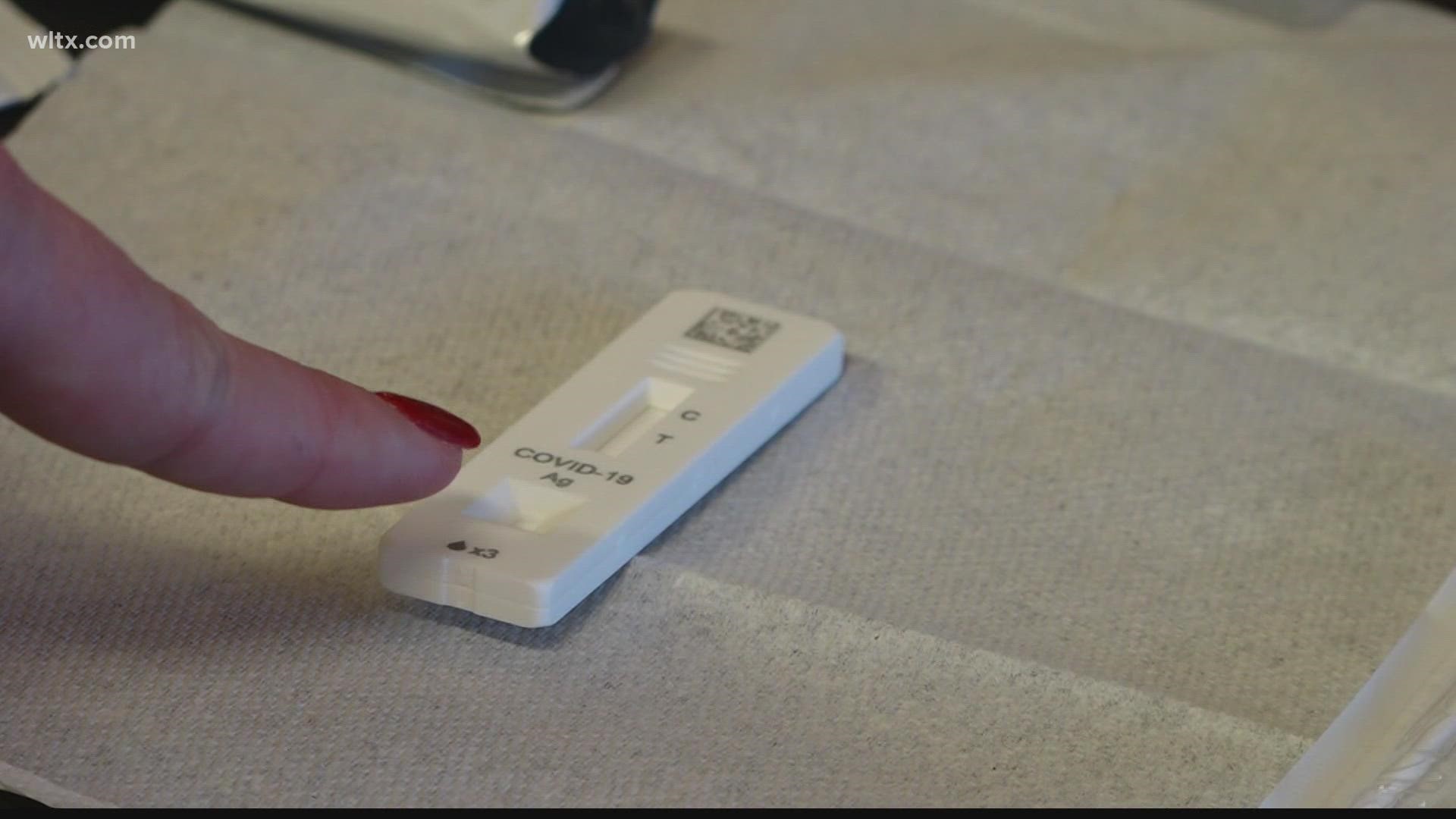COLUMBIA, S.C. — As COVID-19 cases rise, many are looking to at-home tests to see if they have coronavirus.
Experts say current antigen tests, like the at-home kits, are not as good at picking up on the omicron variant. The tests are more likely to give a false negative, which can lead to the further spread of the virus.
USC Epidemiologist Dr. Melissa Nolan showed us how to properly use an at-home test using “On/Go” self-test.
Step 1: Wash your hands. “Wash your hands for 20 seconds with soap and warm water,” Nolan said.
Step 2: Unpack your kit. “You’re going to have the well, where the liquid goes in. You’re going to have the control strip at the top, and then you are going to have the t, which is the line that would say you are positive," Nolan said.
Nolan said one line is negative and two lines means positive for COVID. She says you need to slowly open the chemicals and take out the nasal swab.
Step 3: Swab both nostrils. Nolan says you'll swab both nostrils, circling each nostril five to six times.
“I like to think of this as half of the ABC song. So, when you get to J or K, in one nostril you want switch over to the other nostril.”
Step 4: Process the test. Nolan says you'll put the nasal swab into the chemicals, circling five times. Put the lid on and give it a nice shake, finally putting three drops into the well of the tester. Then, put it on a nice even surface and wait for 10 to 15 minutes to find out your result.
Demand for at-home tests is soaring amid this COVID surge. “It makes testing more accessible to the general public," Nolan said.
Nolan says at-home tests can be used if you have COVID-19 symptoms or have been exposed to someone with COVID. She says if your test comes back negative and you’re having COVID symptoms, you might have a false negative result.
“If you’re having symptoms, and you test negative on the first one, I would encourage you test again about 24 - 48 hours later," Nolan said. "If that’s still negative, and your symptoms are starting to resolve, then you can have a little more confidence.”
Nolan says at-home tests offer peace of mind, and newer test kits are more likely to detect new variants as opposed to older self-tests.
She also advises people to have two test kits on hand, in case they make a mistake and need to start again.

